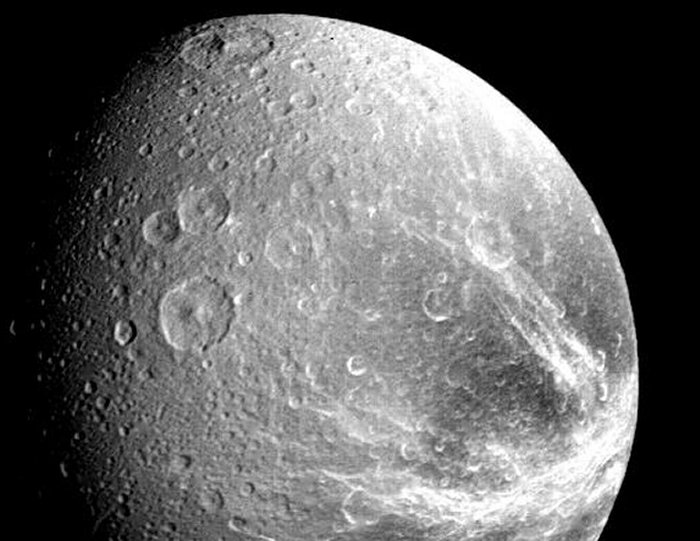MessageToEagle.com – While mapping of the wispy terrains on Saturn’s moon Dione, researchers at the Planetary Science Institute have revealed mysterious straight bright stripes that are generally long (10s‐100s km), narrow (<5 km), and brighter than the surrounding terrains.
The origins of these linear virgae (virgae meaning a stripe or streak of color) are most likely caused by the draping of surface materials like material from Saturn’s rings, passing comets, or co-orbital moons Helene and Polydeuces.

“The evidence preserved in the linear virgae has implications for the orbital evolution and impact processes within the Saturnian system,” associate research scientist Alex Patthoff said in a press release.
Similar features are also observed on the surface of Rhea, the second-largest moon of Saturn and the ninth-largest moon in the Solar System.
The observed stripes are parallel and appear to overlie other features and are unaffected by topography, suggesting they are among the youngest surfaces on Dione, due to more recent geological activity.
“Their orientation, parallel to the equator, and linearity are unlike anything else we’ve seen in the Solar System,” Patthoff said.
“If they are caused by an exogenic source, that could be another means to bring new material to Dione. That material could have implications for the biological potential of Dione’s subsurface ocean.”
The research was based on images obtained by NASA’s Cassini spacecraft.
MessageToEagle.com






